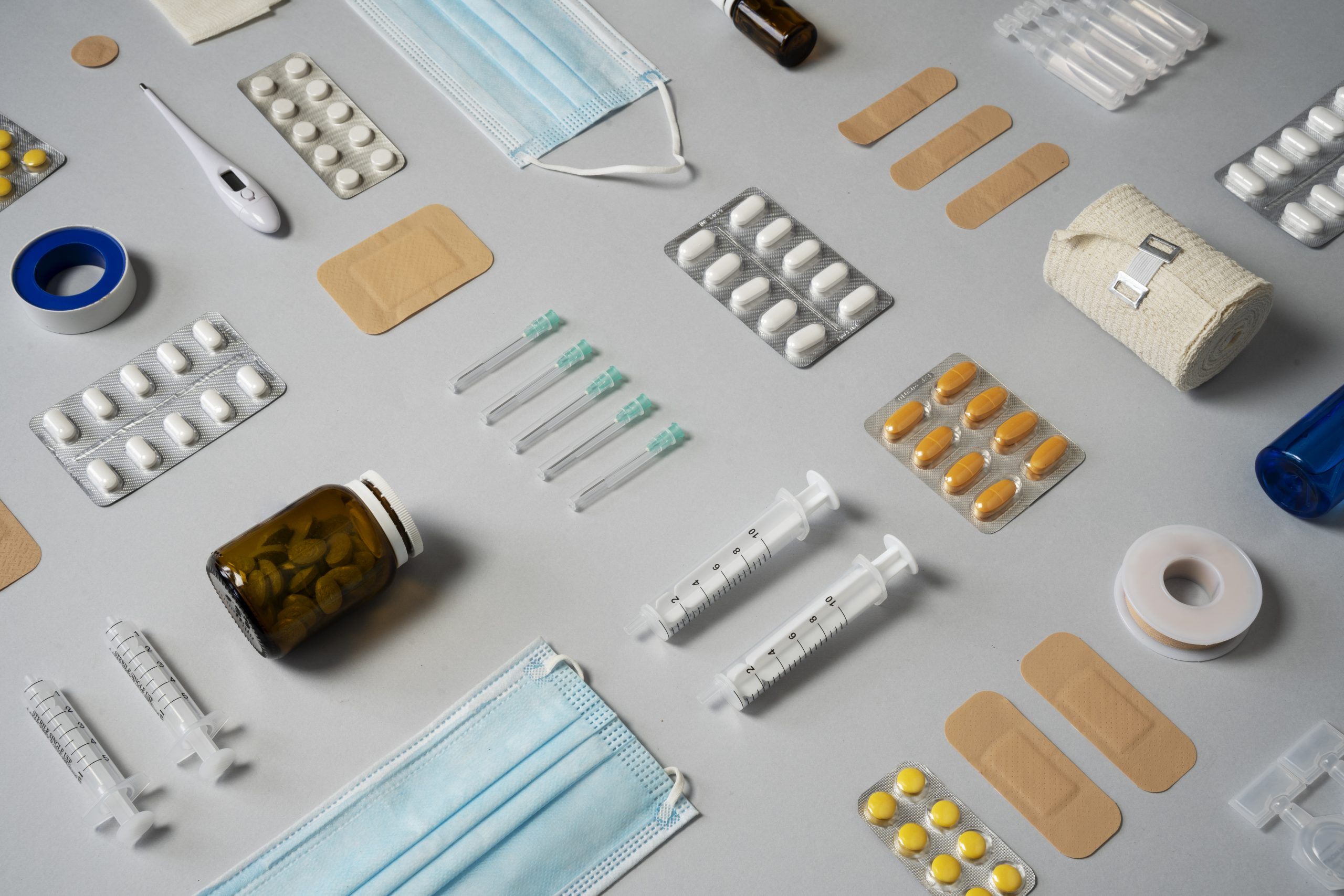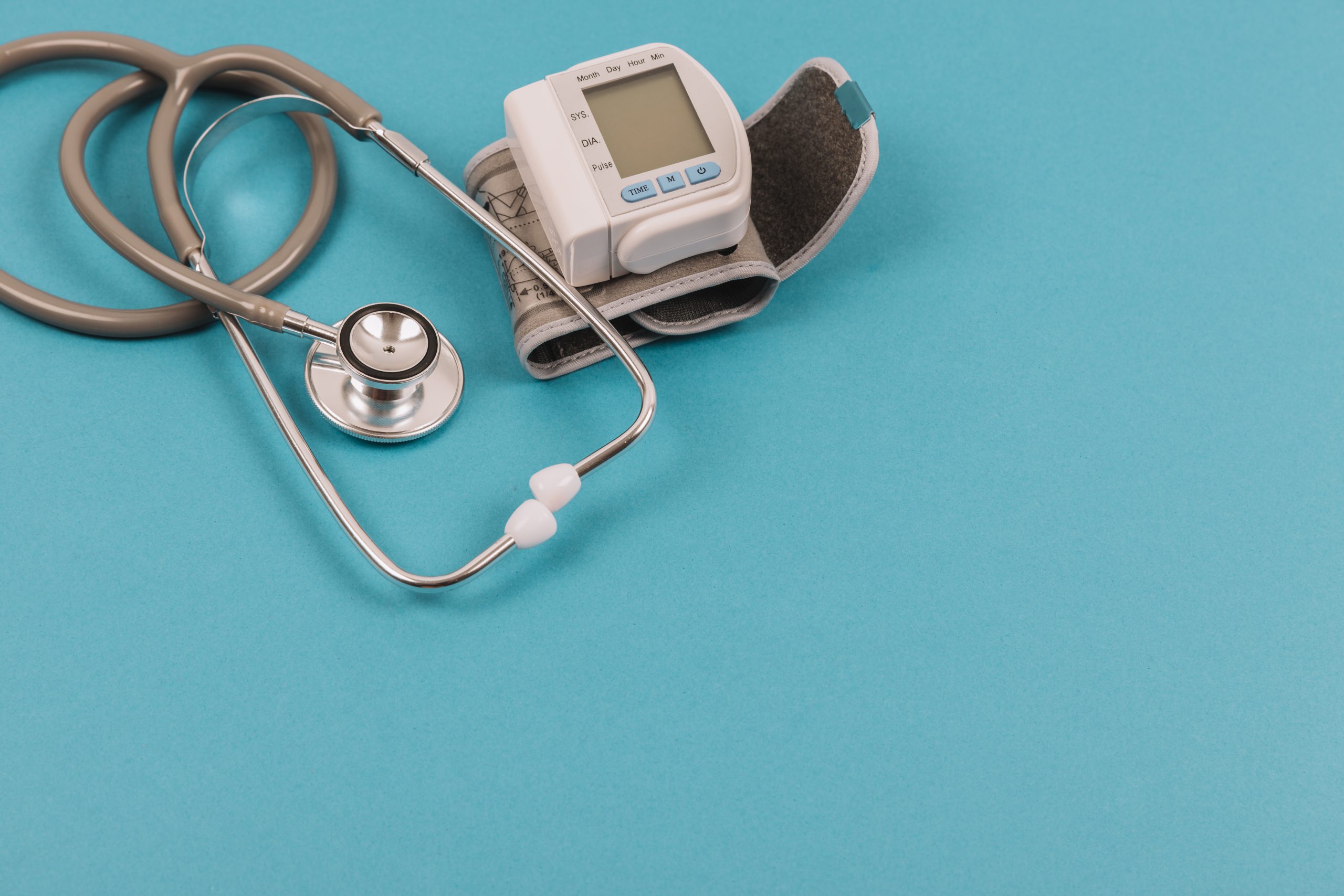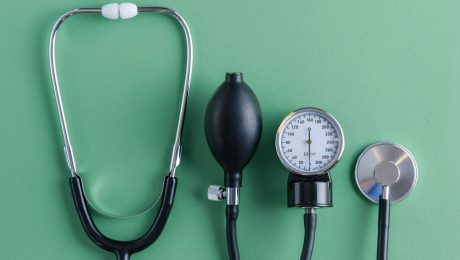BLOG & STORIES
Understanding Oncology: Exploring the Basics of Cancer Treatment
Cancer, a complex group of diseases characterized by abnormal cell growth, is a major global health concern. Fortunately, the field of oncology has made significant strides in understanding and treating various forms of cancer. In this blog, we delve into the fundamental aspects of cancer treatment, focusing on the role of oncology medicine and highlighting the contributions of Elis Ilac in providing these essential treatments.
The Basics of Cancer Treatment: A Multifaceted Approach
Cancer treatment is a multifaceted journey that requires a comprehensive approach. It involves a combination of medical disciplines, therapies, and interventions designed to target and eradicate cancer cells while minimizing damage to healthy cells. The primary methods of cancer treatment include:
Surgery: Surgical procedures involve the removal of cancerous tumors and adjacent tissues. It is often the first step in treating solid tumors and can be curative or palliative.
Chemotherapy: Chemotherapy uses drugs to target and destroy cancer cells. These drugs can be administered orally or intravenously, and they work by disrupting the growth and division of rapidly multiplying cells.
Radiation Therapy: This treatment involves the use of high-energy radiation to damage and destroy cancer cells. It is often used in combination with surgery or chemotherapy.
Immunotherapy: Immunotherapy harnesses the body’s immune system to recognize and attack cancer cells. It has shown promising results in various types of cancer.
Targeted Therapy: Targeted therapy focuses on specific molecules involved in cancer growth. This approach aims to disrupt the signals that promote cancer cell growth and survival.
Precision Medicine: Precision medicine involves tailoring treatments to individual patients based on their genetic makeup and the specific characteristics of their cancer.
The Role of Oncology Medicine: Providing Hope and Healing

Oncology medicine plays a pivotal role in cancer treatment. These medications are designed to specifically target cancer cells or modulate the body’s response to the disease. They range from traditional chemotherapy drugs to newer, more targeted therapies. Elis Ilac, a reputable pharmaceutical company, has been at the forefront of providing oncology medicine that contributes to better patient outcomes.
Elis Ilac: A Beacon of Hope in Cancer Treatment
Elis Ilac is a distinguished name in the field of pharmaceuticals, with a special focus on oncology medicine. The company’s dedication to research and innovation has resulted in the development of cutting-edge treatments that make a difference in the lives of cancer patients. Through a commitment to quality, safety, and efficacy, Elis Ilac has earned the trust of healthcare professionals and patients alike.
Conclusion: Empowering Patients on Their Oncology Journey
Understanding the basics of cancer treatment is crucial for both patients and their caregivers. The journey through cancer treatment can be challenging, but advancements in oncology medicine, along with the dedication of companies like Elis Ilac, offer hope and healing to those facing this diagnosis. As the field of oncology continues to evolve, the synergy between medical science and pharmaceutical innovation holds the promise of brighter days for cancer patients around the world.
- Published in Orphan Line
What Are Medical Consumables?
In the vast and intricate landscape of healthcare, medical consumables are the unsung heroes that silently but significantly contribute to the well-being of patients and the efficacy of medical professionals. These indispensable items, used in every corner of the healthcare sector, encompass a wide range of products designed for a single or limited use. In this blog, we will delve into the world of medical consumables, their diverse forms, and the vital role they play in the field of healthcare.
Meaning of Medical Consumable
Medical consumables are a broad category of healthcare products, designed for one-time or limited usage. They cover an extensive spectrum of items, from the simplest cotton swabs and adhesive bandages to the more complex surgical gloves, syringes, and catheters. The primary reason for their disposable nature is to mitigate the risk of contamination and infection.
List of Medical Consumables
- Protective Gear: Protective gear is of paramount importance in healthcare, especially in sterile environments like operating rooms. This category includes surgical masks, gloves, gowns, and face shields. These items ensure the safety of healthcare professionals by shielding them from potential infections and prevent the spread of diseases.
- Diagnostic Tools: Medical consumables play a pivotal role in diagnostics, offering tools such as test strips, reagents, and lancets. These items are indispensable for a wide range of medical tests, from glucose monitoring for diabetes to pregnancy tests.
- Wound Care Products: Wound care consumables encompass bandages, adhesive tapes, gauze, and wound dressings. They are crucial for covering and protecting wounds, reducing the risk of infection, and facilitating the healing process.
- Intravenous Supplies: The administration of fluids, medications, and nutrients directly into the bloodstream is made possible by consumables used in intravenous therapy. These include IV catheters, needles, syringes, and IV tubing, all of which are essential for patient care.
- Catheters and Drainage Products: Catheters, a common medical consumable, are used to remove or deliver fluids within the body. Additionally, drainage products are employed to manage conditions such as urinary incontinence, significantly improving patient comfort and health.
- Respiratory Care Supplies: The management of respiratory conditions and the maintenance of adequate oxygen levels are crucial in healthcare. Consumables in this category, including oxygen masks, nebulizers, and spirometry mouthpieces, are indispensable for ensuring the well-being of patients with respiratory issues.
- Laboratory Consumables: In laboratory settings, consumables are utilized for various purposes, such as sample collection, testing, and analysis. This category encompasses test tubes, pipettes, culture plates, and microscope slides, all of which are essential for accurate diagnostics and research.

The Importance of Medical Consumables
Medical consumables are the backbone of healthcare for several key reasons:
- Infection Control: The disposable nature of these items reduces the risk of infection transmission. Once used, they are discarded, minimizing the chances of contamination.
- Patient Safety: Medical consumables play a crucial role in ensuring the safety and well-being of patients. From wound care to intravenous therapy, these items are essential for effective and safe treatment.
- Efficiency: The use of consumables streamlines healthcare processes. Healthcare professionals can focus on patient care rather than sterilizing and reusing equipment.
- Research and Diagnosis: In laboratories, consumables are essential for accurate research and diagnosis. They allow for precise sample collection, analysis, and experimentation.
- Cost-Effectiveness: While they are single-use items, medical consumables are cost-effective in the long run. Their use reduces the need for labor-intensive sterilization processes and helps maintain the highest standards of hygiene.
Challenges and Sustainability
The use of medical consumables has grown exponentially in recent years, partly due to the COVID-19 pandemic. This has raised concerns about waste management and environmental impact. Healthcare institutions are increasingly focusing on sustainability, exploring eco-friendly alternatives and efficient waste disposal methods to minimize their carbon footprint.
In conclusion, medical consumables are the unsung heroes of the healthcare sector, supporting every aspect of patient care, from diagnostics to treatment. Their disposable nature not only ensures patient safety but also streamlines healthcare processes. As healthcare continues to evolve, the responsible use and disposal of medical consumables will play an essential role in a more sustainable and efficient healthcare system.
- Published in Medical Consumables
What Is A Medical Device? Examples
In our ever-evolving world of healthcare, medical devices play a pivotal role in enhancing the quality of patient care, improving diagnostics, and revolutionizing treatment methods. In this exploration, we unravel the essence of medical devices, shedding light on their diverse types and unveiling examples that touch lives daily.
What’s a Medical Device?
Medical devices are instruments, apparatuses, machines, or implants specifically designed for medical purposes. They range from simple, everyday tools like thermometers to complex, life-saving devices such as pacemakers. These innovations are crucial in preventing, diagnosing, monitoring, and treating diseases, ultimately contributing to better patient outcomes and improved overall health.
Categories of Medical Devices
1. Diagnostic Devices:
These devices help healthcare professionals identify diseases or conditions. Common examples include blood glucose meters for diabetes management, X-ray machines for imaging, and pregnancy test kits.
2. Therapeutic Devices:
Designed to treat or manage medical conditions, therapeutic devices come in various forms. Examples include nebulizers for respiratory conditions, insulin pumps for diabetes, and infusion pumps for controlled medication delivery.
3. Monitoring Devices:
Monitoring devices keep track of vital signs and physiological parameters. Blood pressure monitors, heart rate monitors, and continuous glucose monitoring systems fall into this category, enabling healthcare providers to make informed decisions about patient care.
4. Surgical Instruments:
Ranging from scalpels to advanced robotic surgical systems, these instruments aid healthcare professionals in performing surgical procedures with precision and efficiency.
5. Implantable Devices:
These devices are placed inside the body to support biological functions or treat medical conditions. Examples include pacemakers for heart rhythm control, cochlear implants for hearing, and artificial joints for orthopedic purposes.
6. Assistive Devices:
Aimed at enhancing the quality of life for individuals with disabilities, assistive devices include hearing aids, wheelchairs, and prosthetic limbs.

Medical Devices Examples
1. Blood Glucose Monitor:
A staple for individuals managing diabetes, these handheld devices allow users to monitor their blood glucose levels, empowering them to make informed decisions about insulin dosage and dietary choices.
2. MRI Machine:
Magnetic Resonance Imaging (MRI) machines provide detailed images of the body’s internal structures without the use of radiation, aiding in the diagnosis and monitoring of various medical conditions.
3. Pacemaker:
Implanted in individuals with irregular heart rhythms, pacemakers help regulate the heart’s electrical activity, ensuring a steady and healthy heartbeat.
4. Artificial Limbs:
Prosthetic limbs, such as advanced robotic arms and legs, restore mobility and functionality for individuals who have experienced limb loss.
5. Hearing Aid:
A boon for those with hearing impairments, hearing aids amplify sound, allowing users to engage more fully in conversations and daily activities.
6. Infusion Pump:
Commonly used in hospitals, infusion pumps deliver controlled amounts of fluids, medications, or nutrients directly into a patient’s bloodstream.
In the dynamic landscape of healthcare, medical devices stand as beacons of innovation and hope, improving the lives of countless individuals worldwide. From the simplicity of a blood glucose monitor to the complexity of a robotic surgical system, these devices embody the intersection of science, technology, and compassion. As we continue to witness advancements in medical technology, the journey of medical devices unfolds, promising a future where healthcare is more personalized, accessible, and effective for everyone.
- Published in Medical Devices
Breast Cancer
Worldwide, breast cancer accounts for 10.4% of all cancer cases among women, making it the second most common type of non-skin cancer (after lung cancer) and the fifth most common cause of cancer-related death.
Breast Cancer Causes
Previous history of breast cancer
A woman with breast cancer has a higher risk of developing breast cancer in the other breast.
Genetic causes
First-degree relatives (mother, sister, daughter) are the most important in estimating risk. A few second-degree relatives (grandmothers, aunts) with breast cancer may also increase the risk. Breast cancer in a man increases the risk for all close female relatives. The BRCA1 and BRCA2 genes increase the risk of breast cancer by about 40 to 80% when inherited. Women with the BRCA1 gene are more likely to develop breast cancer at an early age.
Hormonal causes
Reasons such as menstrual cycle, early pregnancy, hormonal replacement therapy, use of oral contraceptives can accelerate the process of breast cancer by changing hormone levels.
Lifestyle and nutrition reason
Sedentary lifestyle, high dietary fat intake, especially obesity can cause breast cancer in postmenopausal women. Alcohol use is another cause of breast cancer. The risk increases with the amount of alcohol consumed. It has been determined that women who consume two to five alcoholic beverages a day have approximately one and a half times the risk of developing breast cancer compared to non-drinkers.
Environmental cause
It is known that there is a slight increased risk in women who work with low-dose radiation for a long time, for example X-ray technicians.
Signs and symptoms
The classic symptom of breast cancer is a lump in the breast or armpit. Performing a monthly breast self-exam (BSE) is a good way to become familiar with the texture, cyclic changes, size and skin condition of the breasts. General stimulating properties of breast cancer; breast swelling or lump (mass), armpit swelling (lymph nodes), nipple discharge (clear or bloody), nipple pain, inverted (retracted) nipple, scaly or dimpled skin on the nipple, persistent breast tenderness, and unusual breast pain or discomfort; In the advanced stage of the disease (metastatic), axillary lymph nodes are present with symptoms such as bone pain (bone metastases), shortness of breath (lung metastases), loss of appetite (liver metastases), unintentional weight loss (liver metastases), headaches.
Breast cancer is divided into 3 main subtypes based on the presence or absence of molecular markers for estrogen or progesterone receptors and human epidermal growth factor 2 (ERBB2; formerly HER2): hormone receptor positive/ERBB2 negative (70% of patients), ERBB2 positive (15-20%) and tumors lacking these three standard molecular markers (15%).
Management of Breast Cancer
Operation
Depending on the stage and type of the tumor, lumpectomy (removal of the mass only) or surgical removal of the entire breast (mastectomy) are performed. Standard practice requires the surgeon to determine that the surgically removed tissue has cancer-free margins, indicating that the cancer has been completely excised. If the removed tissue does not have clear boundaries, further operations may be required to remove more tissue.
Radiation therapy
Radiation therapy involves the use of high-energy X-rays or gamma rays that target the tumor or the tumor site after surgery. These rays are highly effective in killing cancer cells that remain after surgery or that recur in the area where the tumor was removed. Radiation therapy for breast cancer is usually done after surgery. The radiation dose should be strong enough to destroy cancer cells. Treatments are typically given over a period of five to seven weeks, performed five days a week.
Chemotherapy
Chemotherapy is the use of anti-cancer drugs to treat cancerous cells. Specific treatment for breast cancer; general health, medical history, age (menstruation), type and stage of cancer, tolerance to certain drugs and procedures, etc. determined by its elements. Chemotherapy treatments are usually given in cycles; one treatment for a certain period of time, followed by a recovery period, then another treatment. Chemotherapy is most often given after surgery, and the dose can be given every three weeks or once every two weeks.
In 1994, Cremophor-EL-paclitaxel was approved by the United States Food and Drug Administration (FDA) for the treatment of metastatic breast cancer in patients who progressed after anthracycline-based combination chemotherapy or relapsed less than 6 months after adjuvant therapy. Docetaxel has a similar mechanism of action as paclitaxel, but is a more potent microtubule inhibitor in vitro.
Several groups of cytotoxic agents active against metastatic breast carcinoma include alkylating agents (cyclophosphamide, thiotepa), antimetabolites (5-fluorouracil, methotrexate), vinca alkaloids (vincristine and vinblastine), and antitumor antibiotics (doxorubicin, mitomycin, and others). In the late 1950s, the first attempts to combine two or more of these agents were initiated to manage metastatic breast carcinoma. The combination of cyclophosphamide, methotrexate, 5-fluorouracil, vincristine and prednisone (also known as the Cooper regimen) and its derivatives (CMF and CMFP) was developed. The antitumor antibiotic doxorubicin (Adriamycin, Adria Laboratories, Columbus, OH) was evaluated clinically and shown to have significant antitumor activity. Doxorubicin was also included in combinations with cyclophosphamide and 5-fluorouracil (CAF, FAC). These combinations were soon found to be the most effective systemic treatments for metastatic breast carcinoma. Therefore, the same combinations that proved effective in metastatic disease (CMF and FAC) were included as adjuvant therapy in lymph node positive and ultimately lymph node negative disease. Numerous clinical studies have shown that CMF and similar regimens produce a 50% or greater reduction in measurable tumor deposits in 40-50% of patients.
- Published in Diseases & Treatments





